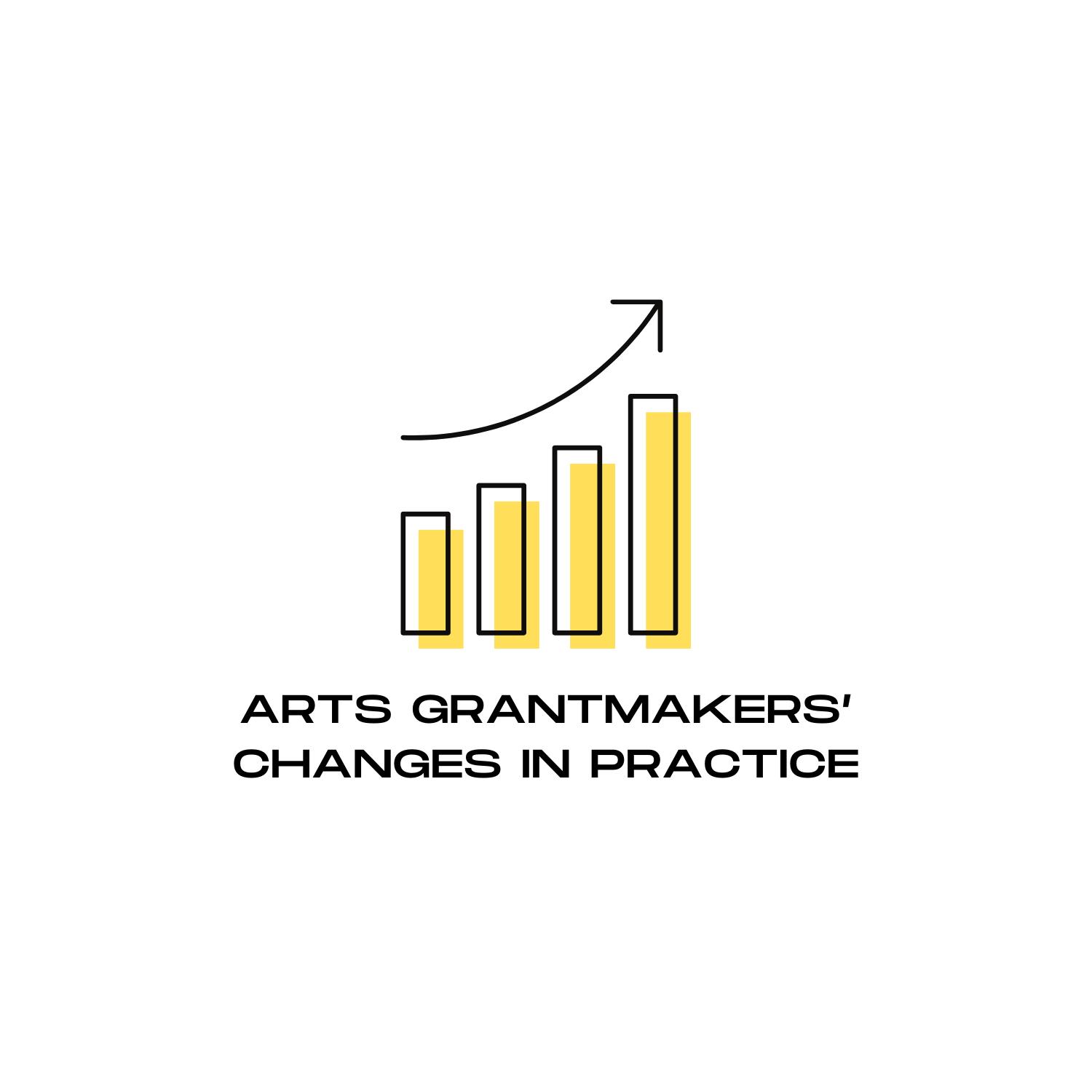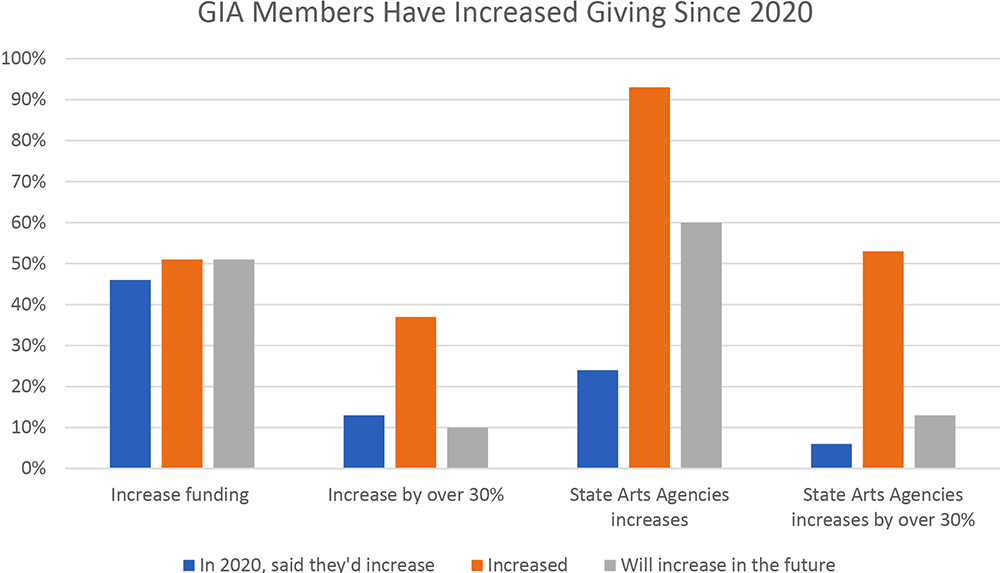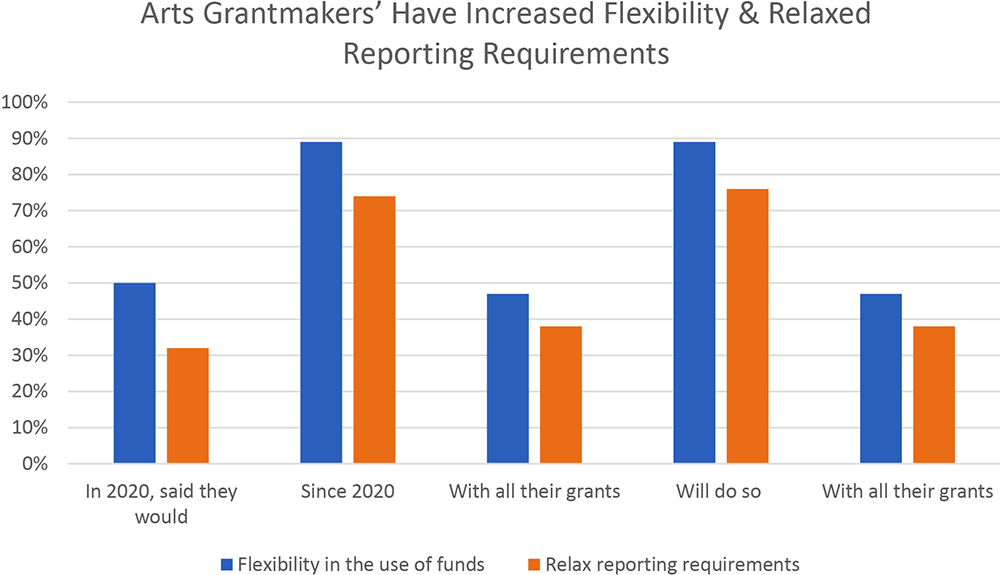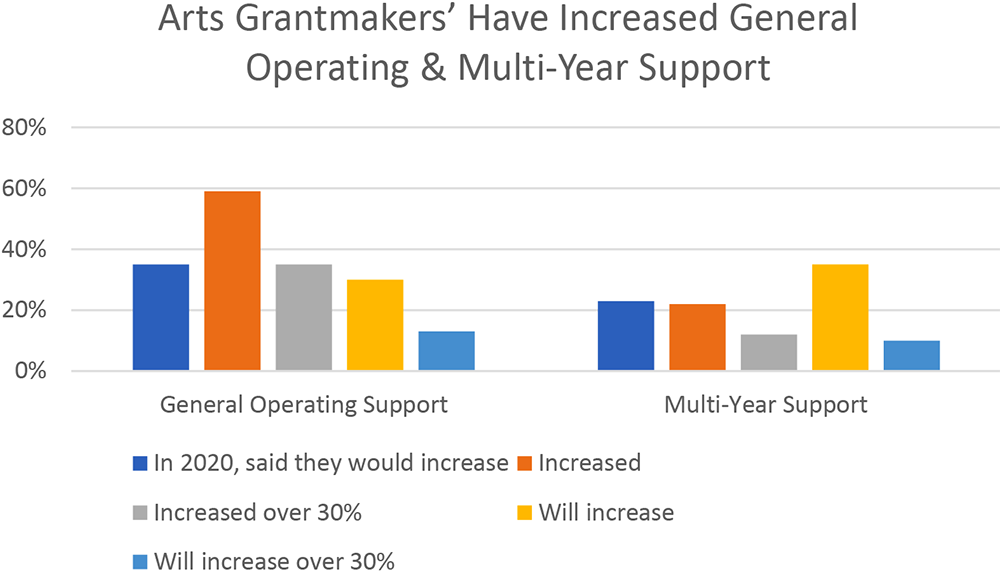Arts Grantmakers’ Changes in Practice 2021: Increased Giving and Flexibility

In late 2020, GIA shared findings from a survey of our members that revealed that arts grantmakers were increasing their giving, their flexibility, and support for BIPOC artists and organizations in response to the pandemic and movement for Black lives.
The patterns revealed in 2020’s survey of arts and culture grantmaking were similar to patterns in the broader grantmaking field. The grantmaking field had become increasingly flexible as part of being increasingly supportive. But the larger grantmaking field have said they did not plan to stay this flexible indefinitely.
A year later, we have conducted a follow-up survey to see if increased support, flexibility, and equity have continued. We are delighted to find that these changes in practice have continued, but we are deeply worried about some projections for the future.
To put this data in the broader context, in 2020 – despite individual and foundations’ philanthropic giving hitting record highs – in the aggregate, individual and philanthropic giving to arts, culture and humanities declined. In contrast, GIA’s members have increased their giving.
- In 2020, nearly half of GIA members surveyed said they would increase their giving in the near future
- In 2021, half of GIA members surveyed said they had increased their giving and said they would increase their giving in the near future
- In 2020, 13% said they would give 30% more or higher in the near future
- In 2021, 37% said they had increased their giving by 30% or more
- In 2021, 10% said they would increase their giving by 30% or more in the near future
- In 2021, 37% said they had increased their giving by 30% or more
More grantmakers increased their funding than had originally projected and more had increased their giving by 30% or more than had originally projected. These increases in funding appear to be a combination of increased foundation payout and local administering of federal relief funds. While foundations increased their giving, no survey participants reported increased their giving more or at higher levels than state arts agencies, thanks to such sources of relief as American Rescue Plan and The Coronavirus Aid, Relief, and Economic Security Act, also known as the CARES Act. This is why legislation matters to our communities and why GIA encourages that we all advocate.
- 93% of state arts agencies increased their giving in since the start of the pandemic
- Over half of that increase was above 30%

Federal emergency relief funds usually cause a temporary spike, rather than being indicative of a long-term pattern. GIA is excited by these increases but know that historic patterns of giving in response to crises tend to reflect a flurry of activity in the short-term that dwindles over time, squandering the opportunity to build resilience.
Pre-pandemic studies by Center for Disaster Philanthropy, found that very little funding given in response to disasters and emergencies goes to resilience and preparedness. Center for Disaster Philanthropy’s reporting on the philanthropic responses to the pandemic revealed that 2020’s response giving dwarfed all past disasters. But it’s too soon to know if the giving for recovery and preparedness will echo similar patterns as the past, dwindling over time and failing to support preparedness.
Increased Flexibility
Whether it’s in our racial equity work or our capitalization work, GIA maintains that flexible funding is the key to supporting organizations to withstand crises. GIA’s survey respondents have overwhelmingly embraced flexibility.
- In 2020, half of GIA’s survey respondents said they would allow for greater flexibility in the use of grant funds as part of their standard practice going forward
- 89% said they’d done so in 2021 (with half having done so with ALL their grants)
- 87% said they would do so in the future (with half saying they would do so with ALL their grants)
- 89% said they’d done so in 2021 (with half having done so with ALL their grants)
GIA was concerned that, in 2020, only a third of survey participants projected making relaxation of reporting requirements standard going forward. But in 2021, more have done so than projected and more will do so in the future.
- 32% said they would make relaxation of reporting requirements standard going forward
- Three quarters said they’d done so in 2021 and said they would do so in the future (with more than a third saying they’d done so and would do so with all their grants)

Multi-Year and General Operating Support
GIA’s survey respondents report an increasing willingness to make multi-year grants. Survey respondents’ approach to general operating support was more mixed with more saying they’d increased general operating support than they’d initially projected. But respondents anticipate these increases dwindling over time. GIA calls on the field to reject short-term solutions and embrace general operating support with the same kind of long-term commitment they’ve made to other forms of flexibility.
- Nearly a quarter of survey respondents said they would make more multi-year grants as standard practice going forward
- Nearly a quarter said they have done so in 2021 (with 12% saying they’d increased multi-year grants by over 30%)
- 35% said they would do so in the future
- Nearly a quarter said they have done so in 2021 (with 12% saying they’d increased multi-year grants by over 30%)
- Over a third said they would make more general operating support grants as part of their standard practice
- Nearly two thirds said they’d done so in 2021
- Nearly a third said they would do so in the future
- Nearly two thirds said they’d done so in 2021

GIA celebrates our field’s response to this moment and encourages the field to continue to advance their work beyond what they prior had considered possible. Our resilience depends upon it.
In part two of this blog post, I discuss our field’s support to individual artists and to equity.
Images: Grantmakers in the Arts.
